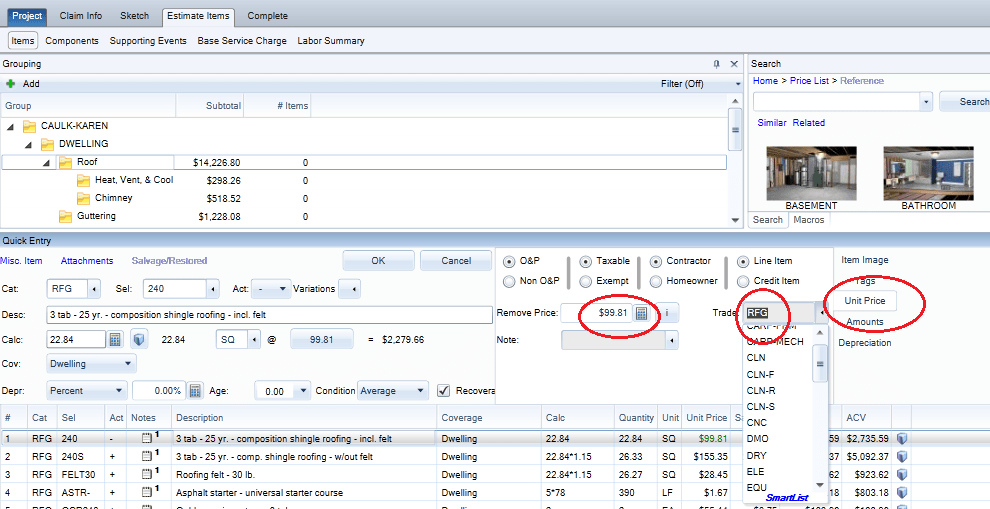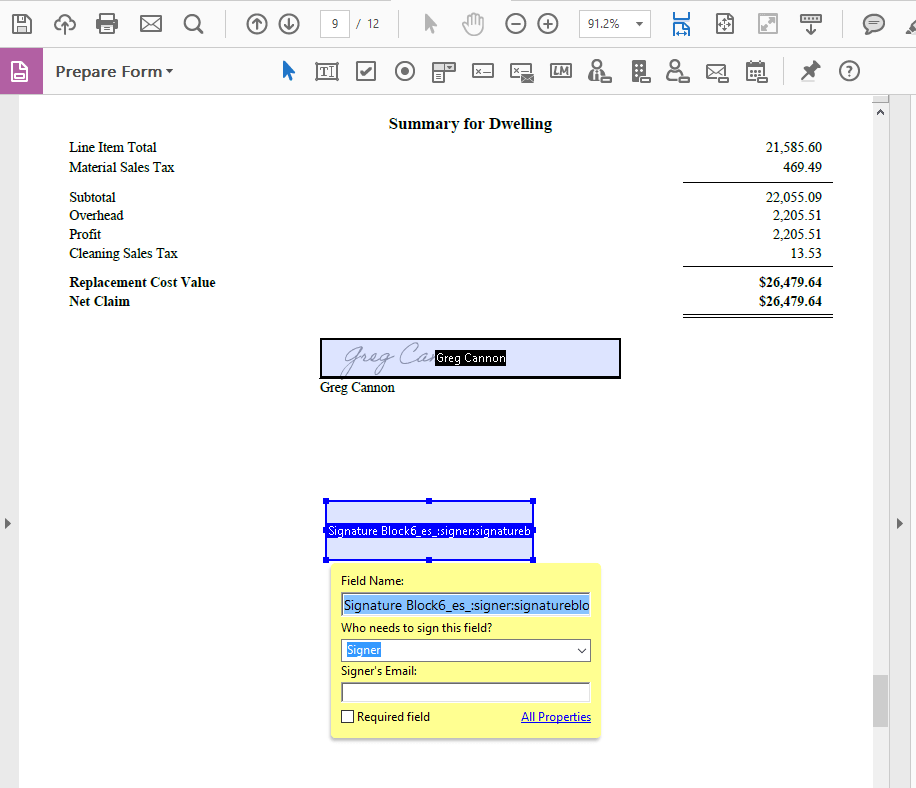
1)
Use a professional opening statement in Xactimate to set the tone with the insurance company, and let them know that you are not some small-time outfit that they can push around.
Here is an example of one of our opening statements that we use for some clients that we write scopes for. This entire opening statement fits on the second page of your Xactimate scope:
**Please be advised, To whom it may concern: We reserve all of our rights as a privately owned General Contracting Company. Any attempt to interfere with our contract, or our business relationship with our customer will be considered as “tortious interference”, also known as “intentional interference with contractual relations”, and will be followed up with the appropriate civil action against the tortfeasor and the company they are acting as an agent of, in the jurisdiction where our contract originated.
Please also be aware that our business model as a General Construction firm is to subcontract all specialty, licensed, and/or hazardous trades to specialized tradesmen. Therefore, we do not use the default demolition general labor (DMO) in the “unit price” of the Xactimate removal line items on any specialty, licensed, or hazardous trades. All removal lines “unit price” are attributed to their appropriate specialty, licensed, and/or hazardous trade. This is required to appropriately represent our cost of job-personnel overhead that is built into Xactimate’s line item price.
According to OSHA:
“Two major classes of hazardous work involved in construction are roofing and carpentry. Among these workers, falls from heights comprise significant portions of injuries and costs. This analysis looks at workers’ compensation data for injuries resulting from falls from elevations, and from falls from ladders and scaffolds. Data came from statistics collected from insured employers in 36 states, which comprises approximately 1/3 of total workers’ compensation benefits.”
As a General Contractor, we are required to abide by all state regulated building codes and schedule/supervise all specialty trade sub-contractors, as well as, handle all permit processes, OSHA regulation compliance, general liability insurance for this project, and worker’s compensation for our employees/sub-contractors that we supervise or that otherwise enter the job site while work is in progress. Therefore, General Contractors overhead and profit is charged on all projects, as well as the job related overhead general conditions.
According to Xactware (Xactimate):
“The building cost data published by Xactware is not designed to be inclusive of sales tax, General O&P, or Job-Related O&P within the unit prices.”
“General Overhead are expenses incurred by a General Contractor, that cannot be attributed to individual projects, and include any and all expenses necessary for the General Contractor to operate their business. Examples (including but not limited to): General and Administrative (G&A) expenses, office rent, utilities, office supplies, salaries for office personnel, depreciation on office equipment, licenses, and advertising. Including General Overhead expenses in an Xactimate estimate–General Overhead expenses are not included in Xactware’s unit pricing, but are typically added to the estimate as a percentage of the total bid along with the appropriate profit margin.
Job-Related Overhead are expenses that can be attributed to a project, but cannot be attributed to a specific task and include any and all necessary expenses to complete the project other than direct materials and labor. Examples (including but not limited to): Project managers, onsite portable offices and restroom facilities, temporary power and fencing, security if needed, etc. Including Job-Related Overhead expenses in an Xactimate estimate–Job Related Overhead expenses should be added as separate line items to the Xactimate estimate. This is done within the Line Item Entry window of an Xactimate estimate by selecting the proper price list items, or creating your own miscellaneous items.”
According to the Federal Trade Commission:
Price fixing is an agreement (written, verbal, or inferred from conduct) among competitors that raises, lowers, or stabilizes prices or competitive terms. Generally, the antitrust laws require that each company establish prices and other terms on its own, without agreeing with a competitor. When consumers make choices about what products and services to buy, they expect that the price has been determined freely on the basis of supply and demand, not by an agreement among competitors. When competitors agree to restrict competition, the result is often higher prices. Accordingly, price fixing is a major concern of government antitrust enforcement. Illegal price fixing occurs whenever two or more competitors agree to take actions that have the effect of raising, lowering or stabilizing the price of any product or service without any legitimate justification.
2)
Change the unit price of all removal items to their corresponding trade, instead of the default DMO. And if an adjuster questions it, the reasoning is in the opening statement above.


3)
After you have had your home-owner sign your contingency agreement or initial contract, complete your supplemental Xactimate scope (or have us do it for you), and send it to your customer to have them electronically sign it before you send it to the insurance company. I use “Adobe Sign”, but there is Verisign, and Docusign as well. The point of this step is to show the insurance company that your customer has reviewed and approved your supplemental scope.
